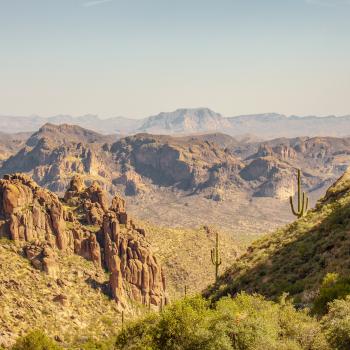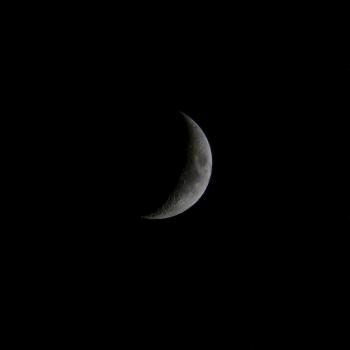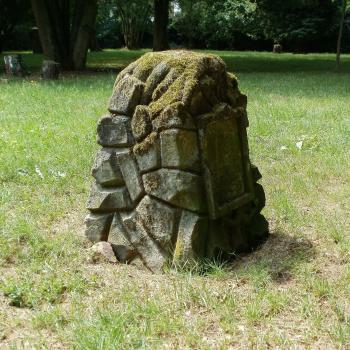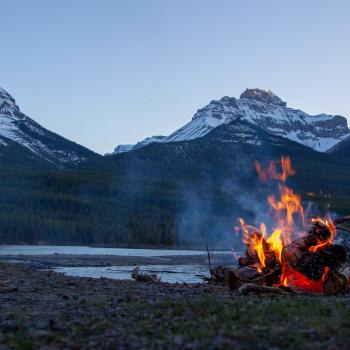For the next few weeks, we’ll be delving into the 30 Days of Devotion, a devotional writing project that helps us explore the gods we worship. We will do each of these for each of the Four Gods. If you are an Other Person or exploring the Four Gods, feel free to add your own comments – or join in!
If you have another topic you would like to see written on, you can email me (aine@daoineile.com) or message me on Facebook – but my writing will likely go to one of my other blogs, as we’re focusing on the Otherfaith at this blog for the time being.
Go contribute to this fundraiser for the victims of the Kansas April 13th shooting.
Worship
Today’s prompt focuses on how the god’s worship has changed in modern times – but the Clarene is a modern god, so it’s begun in modern times! So, instead, I will focus on what her worship looks like now and what it might look like in the future.
Present Day
If you’d like a peak at what we’re doing regarding the Clarene’s devotions, you can check out some e-shrines set up by those that worship the Four Gods. Here is one shrine with multiple contributors, and here is another. And here’s some pictures that show what offerings and devotion look like.
the Clarene is the foundation of our practice, the root, the one who teaches us how to be Other People by guiding us well and truly with her compass rose. She lets us into the West – it is only by her leave that we are able to enter the holy otherworld she created. She has much to offer us.
Listening to the community, I learn that her devotion as it is now involves self-healing. It involves recovery, learning how to heal, figuring out how to live in this world of ours. And it involves, always, love. Her and the Dierne are tied together as teachers of love, educating us on how to love ourselves though monstrous we may be. (And if you’re interested in more connections between those two, keep an eye on our WordPress blog this coming Monday.)
There’s a station for music that she enjoys and connects to her as well that you can listen to.
the Clarene, as stated, is the foundation, and she is what is giving structure to the Otherfaith. We are messy now, still being created and still forming, but she is lending us the stability we need until we can, in turn, support her as she does us. And with each step to healing we take, we learn better how to honor her. This is why we start with healing and recovery; she is the god of commitment, and so we need to be in a place where we can commit before we take that final step into her world.
Future Worship
She is painted in the temple’s kitchen, on the walls and on the trash cans (there in her devouring aspect). She is sung to when the bread is kneaded and the soup is stirred, and she is called first of all the gods when the food is blessed and laid out for the People.
When a new Other Person comes into religious commitment, they are introduced to her properly, and we ask for her blessings. We give them a compass rose pendant to guide them, to show how she will guide them through their lives. She is not fate, she does not steer our lives, but she can point where to go.
Individual People have gardens in their homes dedicated to her, and the temple itself grows fruits and vegetables as well as herbs, cultivated by her priests and devotees. A priest properly trained in slaughtering animals sacrifices chickens or goats if it is called for, and the entire community takes part in the sacrifice.
Her secrets, the parts of her only open to her close devotees, are bloody and dark, and they are able to heal the soul through destruction and death. They have lived through her trials and wear black piercings in their ears and nose, their skin marked to show their connection to her. She has taught them how to heal and how to create from nothing more than a wish and some dirt, and they teach that to the rest of the People these same gifts, only without the pain that devotion inevitably brings.
There are pages full of prayers to her, and we know so many stories of her we can’t keep track of them. That is what awaits in our future.
Previous Posts
Basics: Four Gods (Redux) [Patheos]
Basics: Clarene (Origins)
Basics: Clarene (Myths)
Basics: Clarene (Family)
Basics: Clarene (Spirits)
Basics: Clarene (Names)
Basics: Clarene (Variations)
Basics: Clarene (Mistakes)
Basics: the Clarene (Offerings)
Basics: the Clarene (Holy Days)
Basics: the Clarene (Places)
Basics: the Clarene (Social Issues)
*
Want to participate in the 30 Days of Devotion? Here’s a great link with all the prompts.
Wednesdays are Otherfaith Wednesdays on Tumblr, where you are invited to ask any kind of questions about the religion, the gods, or myths that you have. And for those who a little shy, anonymous asks are on.
We are holding an Otherfaith discussion group every first Sunday of the month. Click here for more details, and send me a message or leave a comment if you would like to join!
New visitor and a little confused where to start? Head over to our About and Otherfaith pages, and then meander over to the beginning of our ‘basics‘ series. Any questions can be directed to my email aine@daoineile.com.
[Want more of the blog? Follow through RSS and Facebook to receive consistent updates!]
















